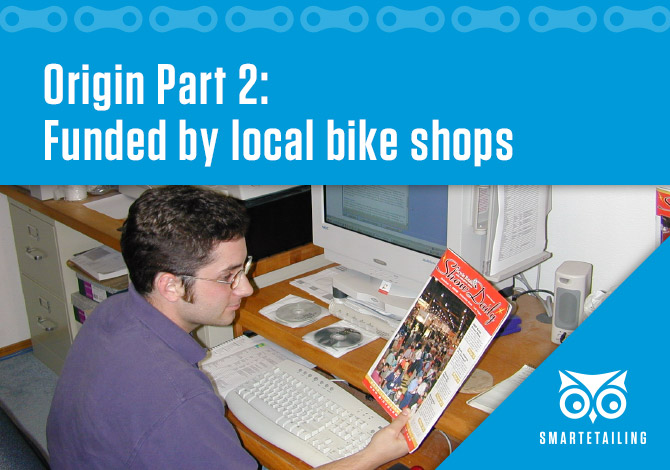
We are celebrating the 20th anniversary of the founding of SmartEtailing by reflecting in this blog series on how the bike industry’s original tech startup came to be.
In the previous post we learned how a local bike shop owner and a cycling industry marketing expert conceived of their business idea.
The vision
Mark and Barry knew that the programming behind their vision was possible. And it seemed clear that this service would help solve some of the issues Brenner experienced at his own bike store. But they had yet to validate their ideas with other bike retailers and attain startup capital. Would the bike industry sign on?
From his time at Catalyst, Graff remembered how Randy Clark, owner of Bicycle Garage Indy, told him about how he would need more help with internet marketing in coming years. So he paid him a visit and presented their early plans. “I’m in,” Clark said, handing Graff a twenty dollar bill.
“It was symbolic,” Clark recalled. He knew Graff and trusted him.
“This was a way to have a website and even more appealing, a way to be able to render products and images and descriptions that any one retailer simply could not do,” Clark said. “There wasn’t enough time in the day to do all of that.”
No Comments Yet
Let us know what you think